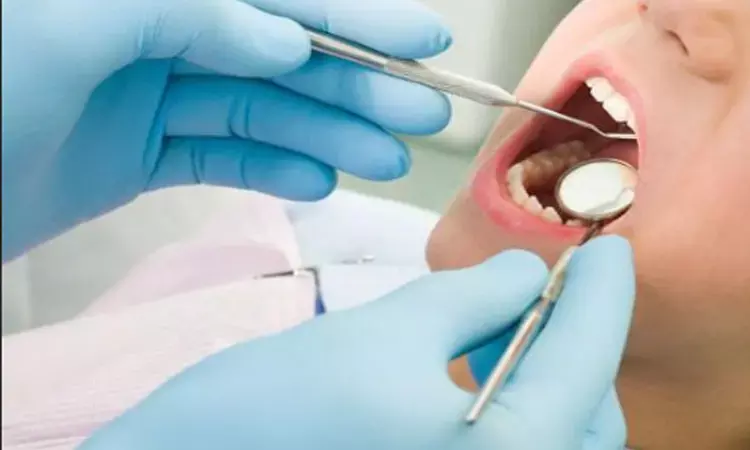- Home
- Medical news & Guidelines
- Anesthesiology
- Cardiology and CTVS
- Critical Care
- Dentistry
- Dermatology
- Diabetes and Endocrinology
- ENT
- Gastroenterology
- Medicine
- Nephrology
- Neurology
- Obstretics-Gynaecology
- Oncology
- Ophthalmology
- Orthopaedics
- Pediatrics-Neonatology
- Psychiatry
- Pulmonology
- Radiology
- Surgery
- Urology
- Laboratory Medicine
- Diet
- Nursing
- Paramedical
- Physiotherapy
- Health news
- Fact Check
- Bone Health Fact Check
- Brain Health Fact Check
- Cancer Related Fact Check
- Child Care Fact Check
- Dental and oral health fact check
- Diabetes and metabolic health fact check
- Diet and Nutrition Fact Check
- Eye and ENT Care Fact Check
- Fitness fact check
- Gut health fact check
- Heart health fact check
- Kidney health fact check
- Medical education fact check
- Men's health fact check
- Respiratory fact check
- Skin and hair care fact check
- Vaccine and Immunization fact check
- Women's health fact check
- AYUSH
- State News
- Andaman and Nicobar Islands
- Andhra Pradesh
- Arunachal Pradesh
- Assam
- Bihar
- Chandigarh
- Chattisgarh
- Dadra and Nagar Haveli
- Daman and Diu
- Delhi
- Goa
- Gujarat
- Haryana
- Himachal Pradesh
- Jammu & Kashmir
- Jharkhand
- Karnataka
- Kerala
- Ladakh
- Lakshadweep
- Madhya Pradesh
- Maharashtra
- Manipur
- Meghalaya
- Mizoram
- Nagaland
- Odisha
- Puducherry
- Punjab
- Rajasthan
- Sikkim
- Tamil Nadu
- Telangana
- Tripura
- Uttar Pradesh
- Uttrakhand
- West Bengal
- Medical Education
- Industry
Multiple bacteria types found to contribute to bone loss in gum disease

Mouths are filthy, harboring the second largest microbiome of the human body. Some bacteria can help break down food, among other responsibilities; other bacteria can travel into the mouth on food, fingers, pen caps and more to contribute to gum disease and other oral infections. More than good or bad bacteria, researchers have now unveiled that positive and negative bacterium are responsible for periodontitis symptoms — Gram-positive and Gram-negative, that is.
Gram-positive bacteria have thicker cell walls that retain the purple color from Gram stain, which can quickly differentiate cell types based on the width of their cell walls. For the first time, researchers found that Gram-positive bacteria can also induce the resorption of the bone that holds teeth in place, called the alveolar bone. The results were published on June 25 in Scientific Reports.
"This finding is a new concept: both Gram-positive and -negative bacteria are involved in the progression of periodontal bone loss," said lead author Masaki Inada, associate professor in the Department of Biotechnology and Life Science at the Tokyo University of Agriculture and Technology (TUAT). "In a healthy condition, the tooth root is embedded into a socket in the alveolar bone in periodontal tissue. Infection of mixed multiple Gram-negative bacteria resulted in alveolar bone resorption and tooth loss induced by severe inflammation in periodontal tissues. It is well-known that the major pathogens of periodontitis are dominantly gram-negative bacteria. It was unclear whether gram-positive bacteria are associated with or contribute to the progression of periodontal bone loss."
In a previous study, the researchers injected lipopolysaccharide (LPS) from Gram-negative bacteria into mice engineered without the gene that produces molecules that gather at sites of damaged tissue. Without these molecules, called prostaglandin E2 (PGE2), the LPS failed to induce bone loss. This suggested, Inada said, that PGE2 is required for periodontitis to progress.
"LPS is considered to be a dominant pathogen causing inflammatory bone resorption in periodontitis," Inada said. "On the other hand, Gram-positive bacteria have been known to contribute to the inflammation of the periodontal gums in the initial phases of periodontitis; however, there was little evidence to show that these pathogens contribute to the induction of inflammatory bone resorption in the late phase of periodontitis."
It comes down to bone remodeling, according to Inada. At what point does cell death from the infection outpace the body's effort to create new bone cells?
"Several reasons could be counting and explaining on these phenomena, " Inada said.
In the case of LPS in the PGE2-deficient mice, the balance stayed in favor of bone formation. But when the researchers introduced lipoteichoic acid (LTA), a major component of the cell wall in Gram-positive bacteria, the balance tipped to bone resorption. The researchers injected mice with periodontitis with LTA and found that it increased the amount of PGE2, resulting in bone resorption. They also saw that Gram-positive bacteria proliferated at a higher rate than Gram-negative bacteria and they preferred to occupy the depths of the teeth pockets — suggesting a more potent dose of LTA closer to the site of bone lose, according to Inada.
"Our goal is to clarify the crosstalk of Gram-positive and -negative bacteria for the pathogenesis and progression of periodontal bone loss," Inada said. "The understanding of the mechanisms will contribute to developing novel drugs for the treatment of periodontal bone loss."
https://www.nature.com/articles/s41598-021-92744-5
Hina Zahid Joined Medical Dialogue in 2017 with a passion to work as a Reporter. She coordinates with various national and international journals and association and covers all the stories related to Medical guidelines, Medical Journals, rare medical surgeries as well as all the updates in the medical field. Email: editorial@medicaldialogues.in. Contact no. 011-43720751
Dr Kamal Kant Kohli-MBBS, DTCD- a chest specialist with more than 30 years of practice and a flair for writing clinical articles, Dr Kamal Kant Kohli joined Medical Dialogues as a Chief Editor of Medical News. Besides writing articles, as an editor, he proofreads and verifies all the medical content published on Medical Dialogues including those coming from journals, studies,medical conferences,guidelines etc. Email: drkohli@medicaldialogues.in. Contact no. 011-43720751


